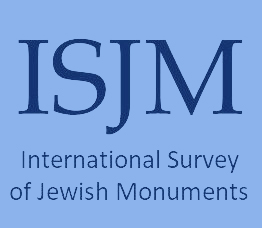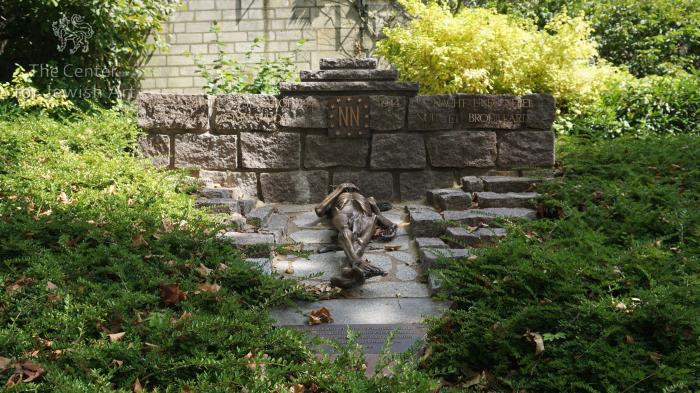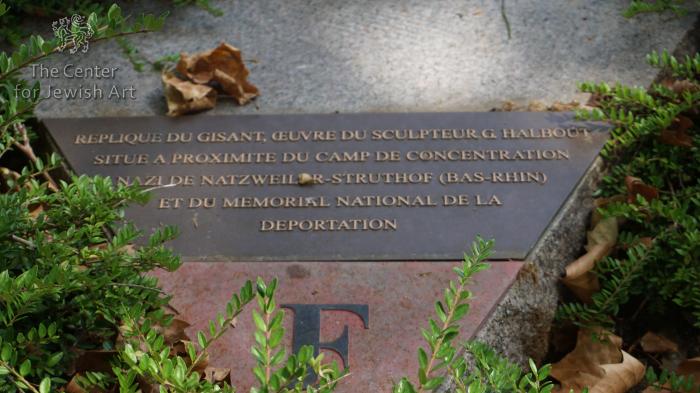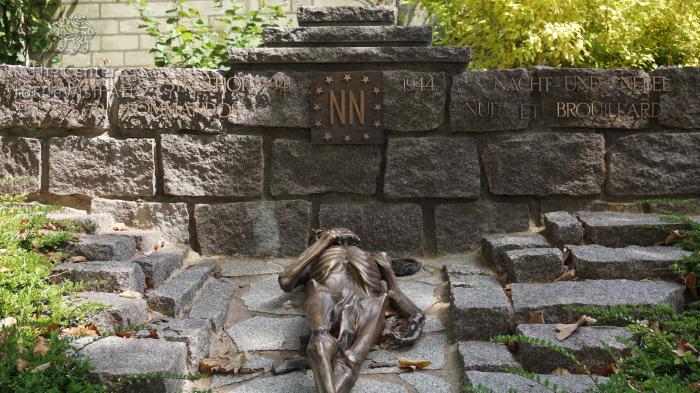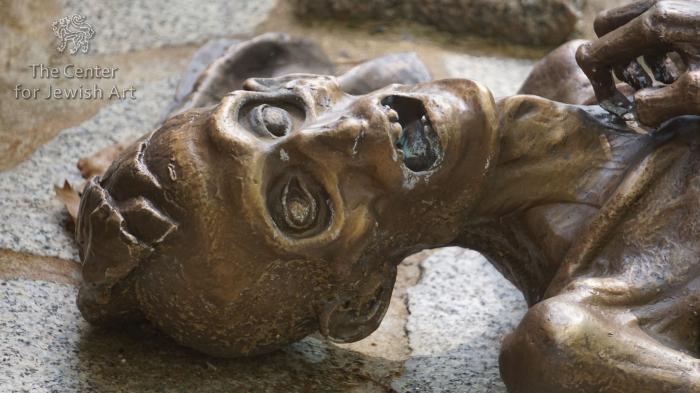Obj. ID: 53317 Natzweiler Struthof Monument in the Père Lachaise Cemetery in Paris, France, 2004
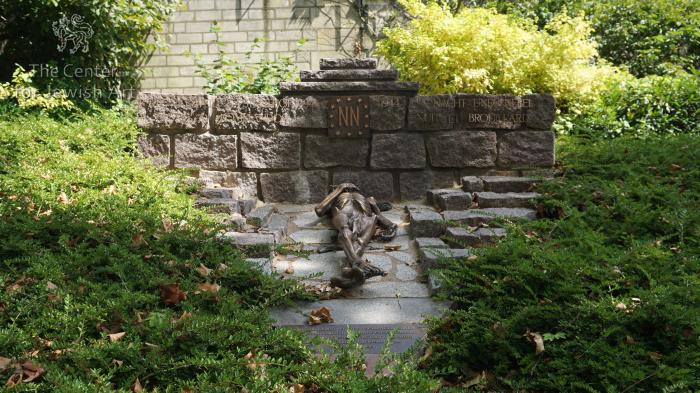
Name of Monument
Natzweiler-Struthof Monument at Pere Lachaise Cemetery
Who/What is Commemorated?
Victims of the Natzweiler-Struthof Concentration Camp
Description
The monument is in section 77 of the cemetery in an area of other collective monuments. The monument is designed in a triangular shape, set into a low hillside next to a path along the cemetery perimeter. A stone wall of three courses of large roughly squared granite blocks forms the back of the memorial and the base of the triangle. The apex of the triangle has a small dark pink triangle with the letter F. The triangle with the letter F refers to the identification badges used in the Nazi camps, where the letter F stood for French. The dark pink color of the triangle probably refers to the identification system meaning "political inmate" or to the red granite that was quarried in Natzweiler-Struthof Concentration Camp. The overall shape of the monument probably refers to the quarries as well.
Applied across the top course of the wall are metal (bronze?) capital letters with two lines of inscription, identifying the name of the camp, and the Nazi program of internment “Nacht und Nebel / Nuit et Broullard” associated with it. In the center of this inscription is a square bronze plaque with the letter “NN” in relief, surrounded by a circle of 12 stars. Atop the center of the wall are three flat rectangular stones laid up in order of decreasing size suggesting a base for a sculpture or some other object, but the top spot is empty.
Spilling out from the wall down the gentle slope in the shape of a triangle is a roughly paved area, also composed of big roughly squared granite blocks. Lying in the center of this, with its head at the wall and feet toward the point of the triangle, is a large bronze statue of an emaciated human figure, presumably a corpse, representing the dead of the Natzweiler-Struthof camp system. The figure is shown with one arm at its side and the other crossing the chest toward the throat. The eyes and mouth are wide open as if in an agonized final statement, or scream, or breath.
Inscriptions
On stone wall:
KL NATZWEILER-STUTHOF 1941 1944 NACHT UND NEBEL
ET SES 70 KOMMANDOS NUIT ET BROUILLARD
Translation: Natzweiler-Struthof concentration camp and its 70 kommandos// 1941 1944 // Night and Fog (in German) // Night and Fog (in French)
On plaque:
REPLIQUE DU GISANT, OEUVRE DU SCULLPTEUR G. HALBOUT
SITUE A PROXIMITE DU CAMP DE CONCENTRATION
NAZI DE NATZWEILER-STRUTHOF (BAS-RHIN)
ET DU MEMORIAL NATIONAL DE LA
DEPORTATION
Translation: Replica of the giant, work of the sculptor G. Halbout located near the Nazi concentration camp of Natzweiler-Struthof (Bas-Rhin) and the national memorial of the deportation
Commissioned by
Amicale national des anciens déportés et familles de disparus de Natzweiler-Struthof et ses Kommandos
| Père Lachaise Cemetery, section 77, Use North entrance: 71, rue des Rondeaux
bronze
The Natzweiler-Struthof concentration camp was located in the Vosges Mountains close to the villages of Natzweiler and Struthof on territory annexed from France. It operated from 21 May 1941 to September 1944, and was the only concentration camp established by Germans in the territory of pre-war France. It was a labor camp, a transit camp, and, as the war went on, a place of execution. During its operation, it housed 52,000 prisoners of whom 22,000 died, including most of the 10,500 Jewish prisoners. Jewish and Roman prisoners were subjected to brutal medical experimentation at the camp. This was the main camp for Nacht und Nebel (Night and Fog) prisoners. In addition to the main camp, there were 55 sub-camps.
The monument in the Père Lechaise Cemetery was paid by subscription through the Amicale national des anciens déportés et familles de disparus de Natzweiler-Struthof et ses Kommandos and was dedicated in 2004 on the 60th anniversary of the liberation. The focus of the monument is a replica of the gigantic sculpture of an emaciated corpse sculpted by the French artist Georges Halbout. Halbout met the prisoners freed from the Natzweiler-Struthof concentration camp in 1945. In the same year, he made a small statue. A large version of the statue was installed at the entrance to the camp and officially inaugurated on June 24, 1973. The statue probably referred to depictions of Christ (e.g., crossed legs) and linked the suffering of a deportee to the martyrdom of Christ.
The dedication of the monument in the Père Lechaise Cemetery was accompanied by a published brochure about the history of the camp.
In the words of mayor Bertrand Delanoé, "Many people ignore that there existed in France, from 1941-1944, a concentration camp, the camp of Natzweiler... That is why the erection at the Père Lachaise cemetery of the Monument to the memory of the victims of the camp of Natzweiler-Struthof, accompanied by the publication of the present brochure, was indispensable.... In homage to the victims, this monument is also a call to vigilance, at a time when acts of intolerance and anti-Semitism are becoming more numerous. May evoking those terrible times contribute to none becoming forgetful and to the inacceptable never occurring again."
Brochure from Monument Dedication (2004), https://www.natzweiler-struthof.com/NatzweilermonumentatPereLachaise.htm (accessed March 3, 2024)
"Dotation «Monument»,", https://amicalenatzweilerstruthof.fr/soutiens-par-lamicale (accessed March 3, 2024)
"Monument aux victimes de Nacht und Nebel,", https://www.appl-lachaise.net/monument-aux-victimes-de-nacht-und-nebel/ (accessed March 3, 2024)
"Monument commémoratif des déportés," POP: the open heritage platform, https://www.pop.culture.gouv.fr/notice/palissy/IM67017687 (accessed March 3, 2024)
"The Recumbent, symbol of the martyrdom of the deportees," Le Centre européen du résistant déporté (CERD). , https://www.struthof.fr/agenda/actualites/default-title/lobjet-du-mois-2 (accessed March 3, 2024)



